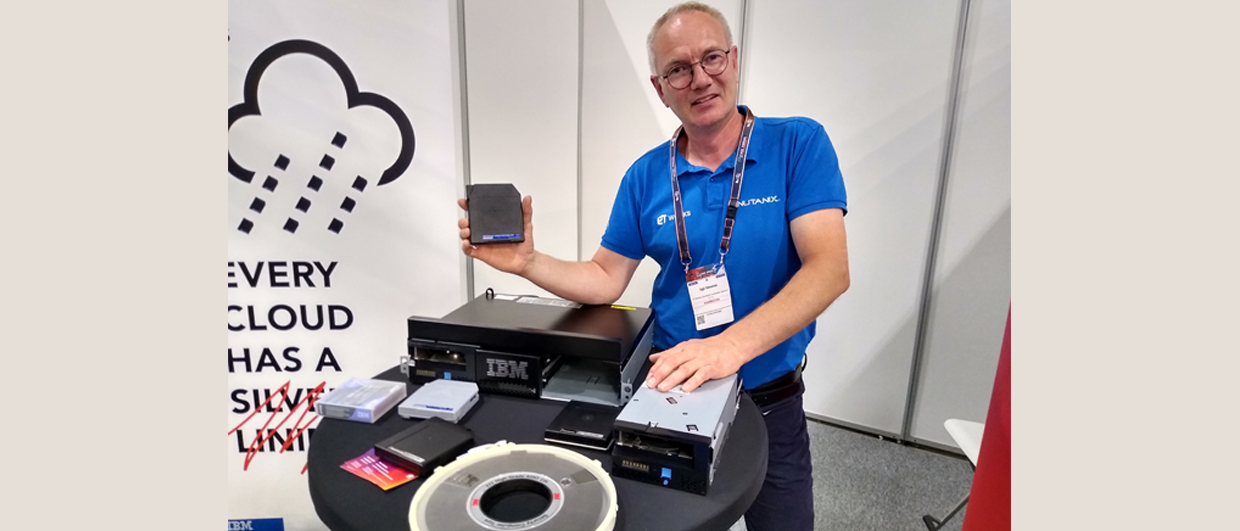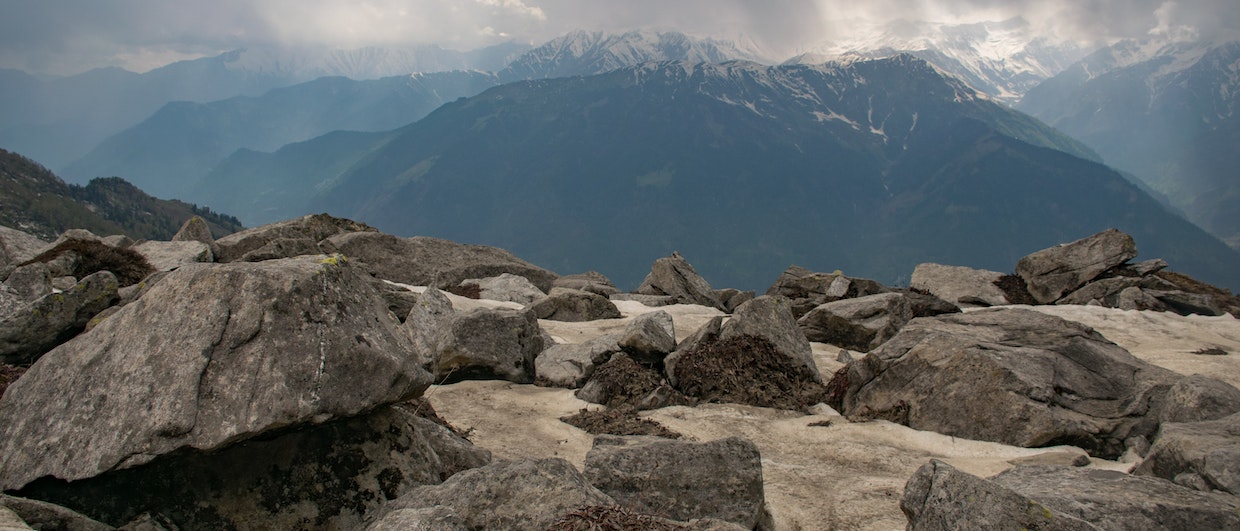Norwegian start-up company inApril explain why they took the plunge into the ocean bottom seismic market.
It is sometimes said that it took nearly 30 years for towed-streamer 3D marine seismic data acquisition to truly establish itself as an indispensable, cost-effective instrument in the offshore E&P toolbox. By the same measure, we should soon be seeing the full potential of ocean bottom seismic (OBS) technology in oil and gas operations being realised.
Many of the issues that complicated the acceptance of 3D marine seismic, such as the cost and complexity of the operation, competing techniques and data processing challenges, have been in play during the evolution of OBS services. There have been some false dawns along the way, but arguably we have now reached a tipping point.
The case for wider adoption of available OBS technology looks more certain than ever, even in the prevailing low cost oil price environment. Strides are now being made in developing ocean bottom node (OBN) technology and operations, to which inApril intends to contribute further. These have not only largely settled the debate between the competing claims of ocean bottom cable (OBC) and OBN, but have cleared the way for a sustainable market in OBS services.
A Little History
The modern era of ocean bottom seismic data acquisition is usually associated with GSI’s Joe Sanders and Fred Barr, whose work on OBC technology was recognised in 1995 by the SEG with the prestigious Virgil Kauffman Gold Medal. However, as far back as the 1950s, ‘bay cable’ systems of OBC, essentially a shallow water extension of land seismic cable systems using hydrophones, were in use. They were limited to around 10m water depth by the ghost reflections from the water surface accompanying each reflection wavelet. Sanders and Barr resolved this issue and others with the introduction of dual sensor acquisition using combined hydrophone and geophone sensors in the cable.
Seabed cables connected to a vessel (later to a series of data collection buoys) could operate in much deeper water. The technique was first conceived as a method of surveying in obstructed areas offshore inaccessible to towed-streamer systems. But the high resolution, multi-component data, including both pressure and shear wave, plus accurate positioning, made the technique a candidate for 4D seismic reservoir monitoring projects and, thanks to the full azimuth coverage possible, for resolving complex subsea geology, such as subsalt in the Gulf of Mexico.
For a time in the 1990s marine geophysical contractors such as WesternGeco and PGS both added OBC crews to their capability. Plenty of oil companies were convinced by the superior data results of OBS acquisition. However, following the 1999–2000 oil industry crisis they did not invest heavily in the technology, and PGS dropped its interest entirely.
The problem was being able to maintain a sustainable business. This stemmed from two main issues. One was the competition from towed-streamer acquisition, particularly in the 4D seismic arena. Seismic vessel contractors showed that they could cost-effectively provide repeatable surveys for reservoir seismic monitoring using improvements in navigation and positioning. Secondly, OBC could never lose its label as expensive, operationally complicated and time-consuming. Reliability was another concern given the vulnerability of cable being laid on the seabed. Norwegian company RXT in the early 2000s had some success in answering some of the critics with its system based on ION’s VectorSeis Ocean system. It enabled the first fully digital seabed recording based on MEMS technology.
SUMIC nodes ready for deployment with the help of ROVs over the Tommeliten field in 1993. (Source: Statoil)
Evolution of OBN Acquisition
Since the 2008 oil industry E&P market downturn OBC projects have seen a significant decline with no investment in new equipment by the remaining operators. However, the appetite for OBS acquisition continues to steadily increase, and is actually eating into the dominant share of the total marine seismic held by towed streamers. Estimates by inApril and others suggest that OBS represented 14% of the total global seismic expenditure in 2014 and was probably more in 2015. By contrast, in 2016 the OBS share of the market has only been 6%. The growth is attributable to the increasing number of OBN projects around the world as its advantages over OBC have been understood.
Evolution of node-based seabed seismic acquisition can be traced back to the late 1980s. This was when researchers in Statoil, principally Eivind Berg, developed the SUMIC (SUbsea seisMIC) technique of placing four-component sensors on the seabed which would enable the potentially valuable shear waves as well as pressure waves to be recorded. The idea was to allow geoscientists to characterise offshore sequences of sedimentary rocks and contained fluids with greater reliability, and it worked. An account of this development can be found in GEO ExPro Vol. 5, No. 4, 2005 (Seismic Imaging Technology Part III by Lasse Amundsen and Martin Landrø).
In 1993 the SUMIC four-component autonomous node was tested on the Tommeliten Field, where resolution of 3D towed-streamer seismic was strongly obscured by gas chimneys. The very first section of P-to-S converted data obtained from the horizontal in-line component resulted in a high-quality seismic image. A subsequent test on the Valhall field by Amoco, operator at the time, resolved a similar issue.
In 1999, Eivind Berg and his colleagues James Martin and Bjørnar Svenning received the very same Virgil Kauffman Gold Medal awarded to Sanders and Barr. Berg went on to be the technical inspiration behind the first dedicated node-based seismic acquisition company, SeaBed Geophysical. In 2003/2004 it carried out a reportedly successful survey for Pemex at the Cantarell field using remotely operated vehicles (ROVs) to deploy more than 1,500 nodes over a total of 230 km2. It was the company’s one and only survey before being taken over by SeaBird Exploration. In 2008 SeaBird took possession of a dedicated vessel that continues to operate today with the same basic technology solution, now under the aegis of Seabed Geosolutions, the Fugro/CGG joint venture.
Bjørnar Svenning, Eivind Berg and James Martin won the 1999 SEG Kauffman Gold Medal for demonstrating that high-quality, high-density marine shear-wave data can be acquired by recording converted waves at the seabed. (Source: SEG)
Versatile and Reliable
Over the last decade, a number of contractors and equipment manufacturers, notably FairfieldNodal, have shown how the versatility and reliability of OBNs can trump OBC operations. Almost without exception major oil companies are stipulating nodes for OBS projects worldwide.
The industry’s early hesitation focused mainly on the recording reliability of the nodes, and unlike cable systems, shooting was blind. In other words data could only be checked when the nodes were retrieved, so recording was something of an act of faith.
Those reservations have been largely overcome with improved electronics, batteries, recording media and clocks. A reliability of 98% has been claimed for node recorders. Larger spreads can be deployed more efficiently than cable and provide just as good data. There is also a huge built-in redundancy. The failure of an occasional node does not compromise a spread as can be the case with cable.
Even though node-based systems have essentially won the contest for the OBS space, industry demand has proved to be sporadic, mainly deterred by acquisition costs. This was what prompted the establishment of inApril in 2012 with a team who, with career-long experience of the marine seismic industry, believed that a next generation node-based system could create a more sustainable market for OBS. The goal was to provide OBS quality data at dramatically reduced cost, putting more equipment on the seabed with a step change in deployment and recovery efficiency. The result would reduce operating and capital costs for oil companies and contractors in the market for OBS. In a low oil price environment this has become particularly significant. If the price is right, oil companies are likely to look more favourably on reservoir-targeted seismic imaging that can help improve existing oil production rather than embark on new exploration with long lead times before any output revenue. Hence the route to a sustainable OBS market.
Just as important, inApril’s mission was to introduce an OBN system capable of winning market share in the exploration arena. For example, cost-effective full-azimuth data for complex geology projects will be feasible. This is where towed-streamers have struggled to offer wide-azimuth and similar, very costly, solutions involving multi-vessel operations and/or the sailing of many lines in different directions.
Venator nodes on the assembly line.
Rethinking the System
The company’s starting point was to rethink the whole OBN technical operation and business. The first conclusion was that inApril would not be a contractor, but would instead supply complete systems, including containerised solutions, flexible enough to be installed on many vessel types. Next came the operational and cost issues that have prevented wider adoption of OBN systems.
The main ‘disruptive’ difference in the performance of inApril’s new Venator system comes from its initial design as a node-on-a-rope, fully integrated system with safe and reliable hands-free operation. A deployment and recovery speed up to 5 knots is possible with nodes at 25m spacing, which is significantly faster than conventional OBN operations, and unlike any other system, the spacing of the nodes can be varied on the rope to suit the geometry of the survey. Some 10,000 nodes can be carried on a single vessel, and are equipped to perform down to water depths of 3,000m. For deeper water and ROV deployment, there is no requirement to change nodes.
Engineer monitoring a factory test of inApril´s ocean bottom nodes.
The Venator A3000 nodes themselves have exceptional 100-day battery life, which is very important for deep water ROV deployment. The unique built-in acoustics (transponder) allows continuous deployment and recovery during operation with no need to stop the process to attach or remove external positioning devices, as is the case with existing systems.
The nodes have also been designed for optimal, space-saving storage through the automated stacking system. This is facilitated by having the battery charger built into the node, so there are no bulky battery chargers to clog up the storage area. All A3000 nodes are pressure tested to their full depth before leaving the factory and should never be opened on board the vessel.
These and other features resulted from designing the Venator system in collaboration with leading Norwegian companies specialising in industrial automation and advanced data management. The full package is expected to reduce the cost of OBN seismic acquisition by up to 70% in some cases and a commensurate reduction of Capex for oil industry customers of up to 50%. Hopefully this will help to focus more oil companies’ and contractors’ attention on the possibilities of OBN seismic applications.
The first commercial trial of the Venator system is due to take place in the Caspian Sea in October.





